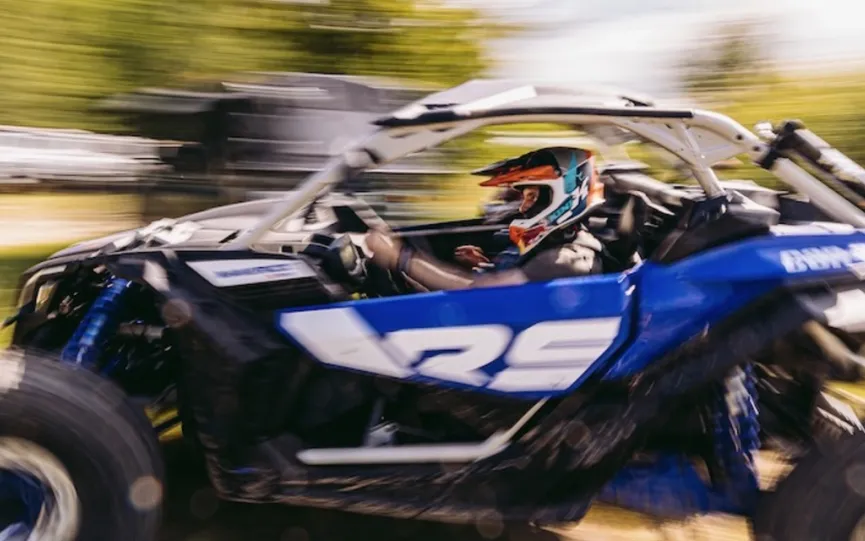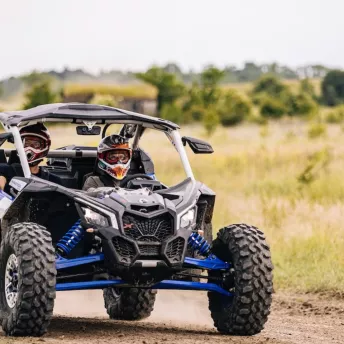What does Stips offer?
-
Gift voucher design
-
100% guarantee
-
Favourable prices
-
Gaining experience
-
Security first
-
Personal approach
What is the maximum speed of a buggy?
- Type of Buggy:
- Engine Power:
- Terrain Conditions:
- Safety Measures:
- Rules and Regulations:
There are many different types of buggies, each with varying power and speed potential. Some buggies are designed for high speeds with powerful engines, while others are built for tough terrain and may have lower top speeds.
The engine power plays a key role in determining the maximum speed. Buggies with higher power tend to reach greater speeds. However, increased power may also require more control and handling skills.
The maximum speed can be affected by the terrain. For example, riding on flat, smooth surfaces allows higher speeds than on rough, rocky, or sandy terrain.
Safety is crucial when determining the top speed. Manufacturers often set recommended maximum speeds to ensure driver and passenger safety. Exceeding these limits can lead to loss of control.
Local regulations may impose speed limits for off-road vehicles including buggies. It is important to follow these rules to stay safe and compliant.
Most commercial buggies used for adventure rides or rentals typically have top speeds between 50 km/h and 100 km/h. However, achievable speed depends on conditions and restrictions. Always prioritize safety and follow manufacturer recommendations and local laws.
How difficult is the terrain when riding a buggy?
- Type of Terrain:
- Inclines and Unevenness:
- Obstacles:
- Weather Conditions:
- Route Difficulty:
- Driver Skills:
Terrain varies from smooth, flat paths to rocky slopes, sand dunes, and muddy patches. Each terrain presents unique challenges. Rocky terrain requires precise control and obstacle navigation, while sandy dunes need traction management.
Steep and uneven terrain can be difficult due to vehicle stability. Buggies with a low center of gravity may risk tipping on sharp slopes. Some models include special features to balance uneven ground.
Obstacles such as rocks, trees, or water crossings increase difficulty. Skill in avoiding or overcoming these is key to the buggy adventure.
Weather affects terrain conditions: rain can make surfaces slippery, while dryness increases dust. Extreme weather demands greater driver skills.
Routes vary in difficulty; some are beginner-friendly, while others are for experienced drivers with extreme terrain challenges.
The driver’s experience greatly impacts handling difficult terrain. Skilled drivers better assess terrain, choose routes, and respond to unexpected situations.
What gear is necessary for buggy riding?
- Safety Harnesses:
- Helmet:
- Protective Goggles or Masks:
- Gloves:
- Protective Clothing:
- Shoes with Good Soles:
Quality harnesses keep drivers and passengers securely in place. Five-point harnesses are preferred for better fixation and protection.
A helmet protects the head in case of accidents or sudden impacts. Quality off-road helmets with padding are ideal.
These shield eyes from dust, dirt, and wind. Good goggles offer wide vision and strong protection.
Gloves protect hands from vibration, abrasion, and dirt. Supportive gloves improve comfort during long rides.
Wear gear that shields you from wind, dust, and elements. Off-road suits or specialized buggy riding clothes enhance comfort and safety.
Shoes with durable, non-slip soles help with pedal control and walking on varied terrain.
Are buggies suitable for beginners?
- Relatively Easy to Drive:
- Safety Features:
- Adjustable Driving Modes:
- Off-road Adventure Experience:
Compared to some off-road vehicles, buggies often have simple controls, automatic transmissions, and intuitive handling, ideal for novices.
Modern buggies include safety elements like harnesses and protective roll cages, providing beginners with confidence.
Some buggies offer driving modes adapted to skill levels, allowing beginners to start on easier settings and progress to tougher ones.
They are perfect for those seeking off-road thrills without complex vehicle operation.
Advantages of buggy riding over regular off-road vehicles
- Agility and Maneuverability:
- Open-Air Thrill and Adrenaline:
- Unique Riding Experience:
- Capability on Various Terrains:
- Fun for All Skill Levels:
Buggies are typically lighter and more compact, allowing them to navigate tight trails, steep inclines, and rough terrain where larger vehicles struggle.
The open design lets riders feel the wind and connect more with the environment, making the experience more immersive and exciting.
Buggies combine off-roading with adventure and excitement, where every hill, jump, and turn becomes part of an adrenaline-packed journey.
Their agility lets them conquer rocky patches, sand dunes, and muddy paths, enabling exploration of diverse environments.
Buggy rides are enjoyable for people of different ages and skills—a great way to spend time outdoors and experience thrill.

